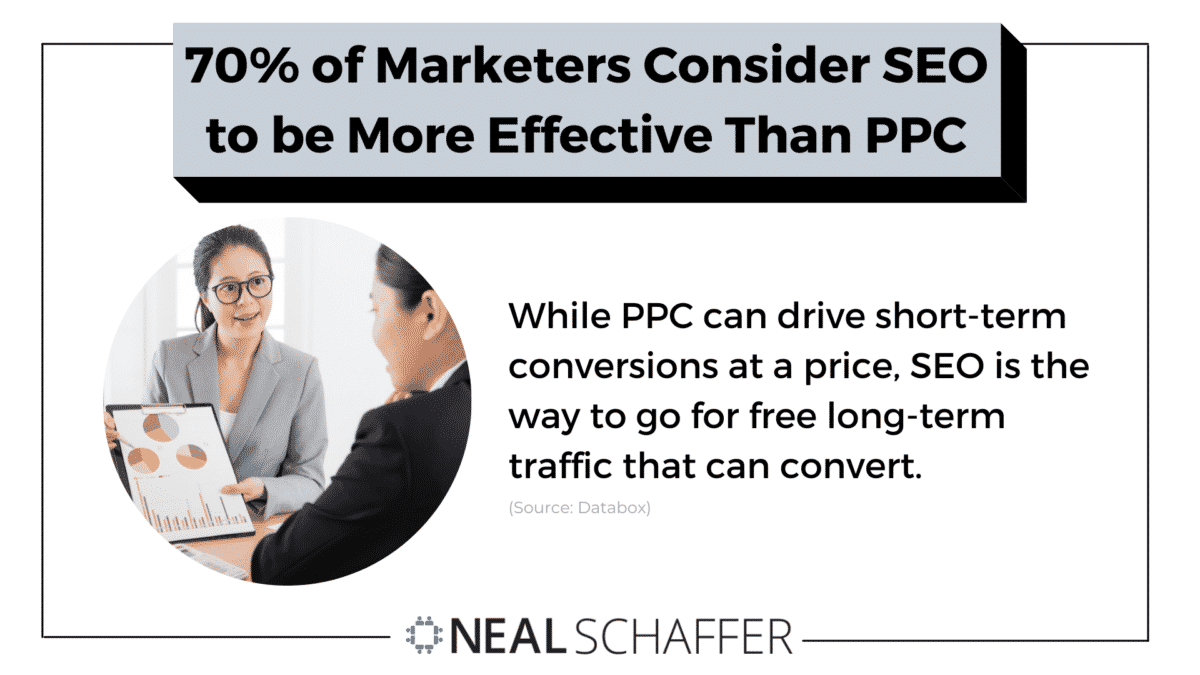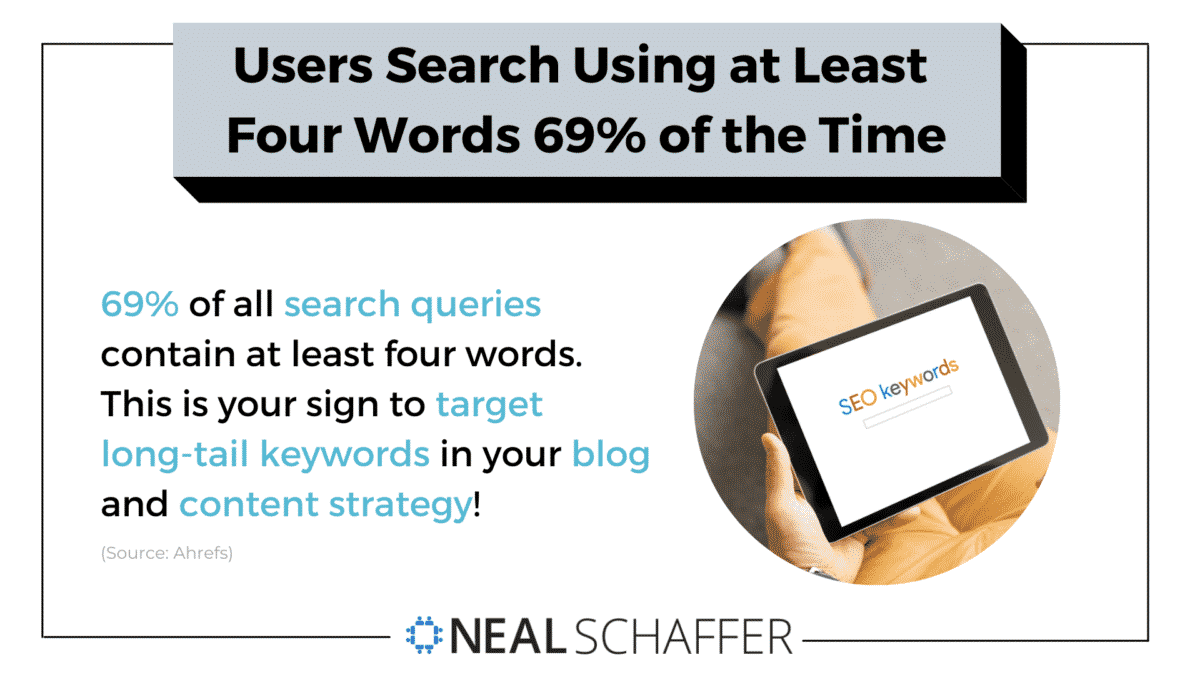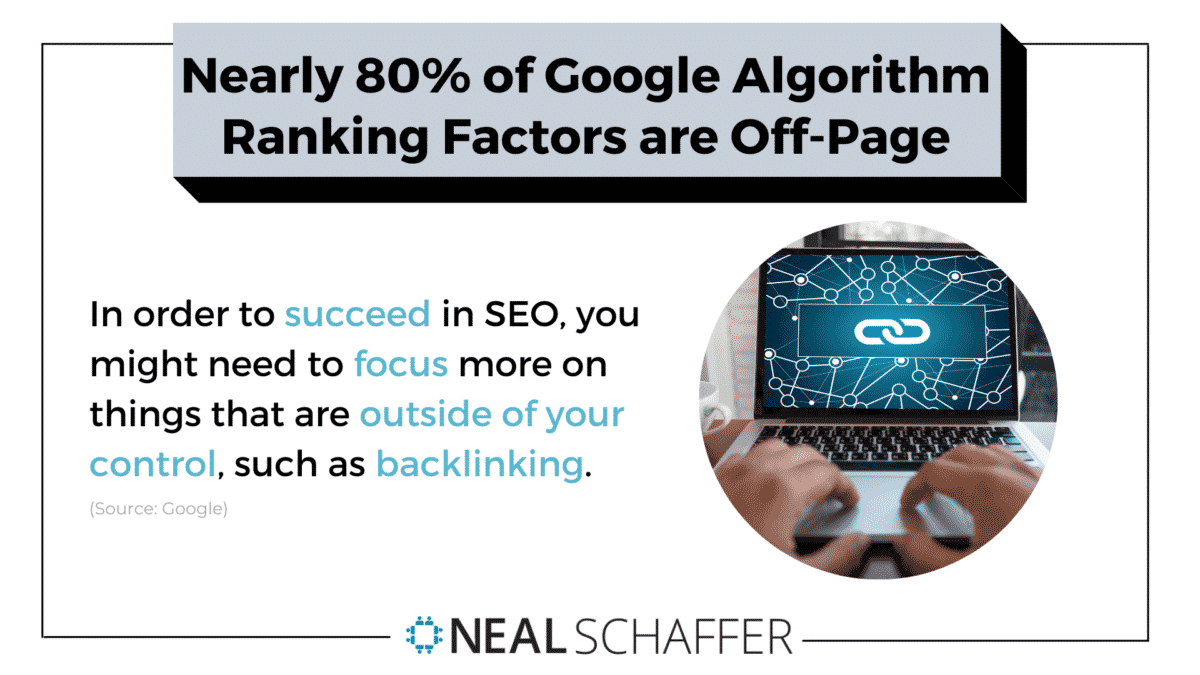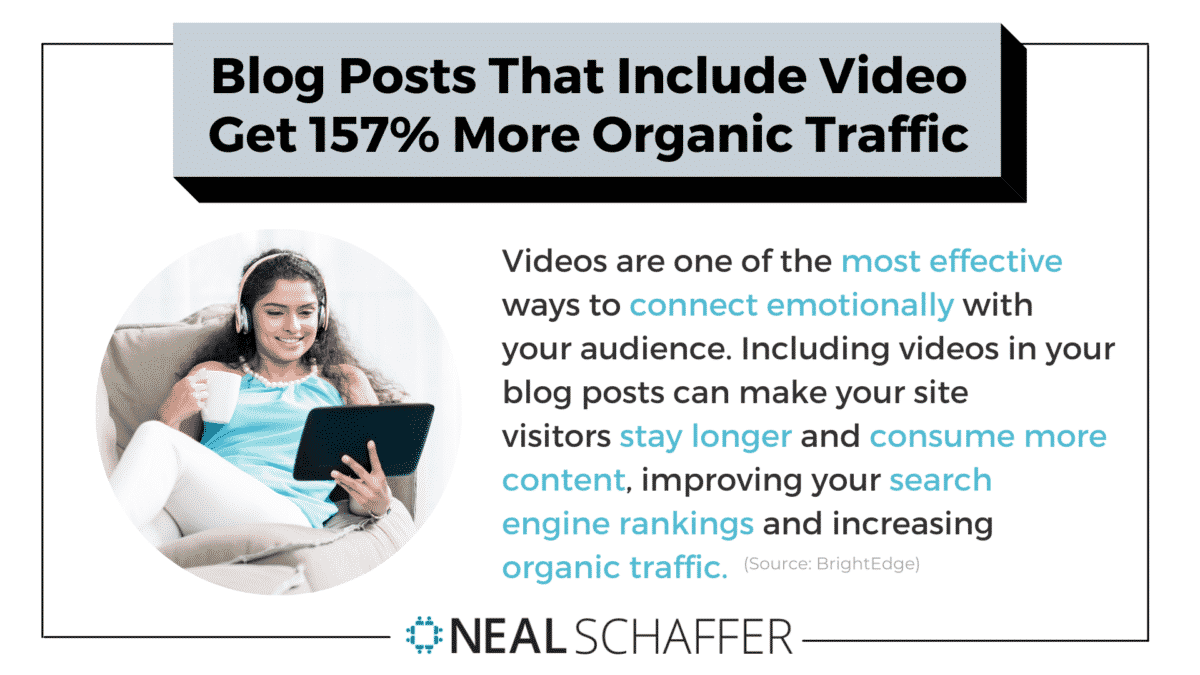After reading these SEO statistics, you’ll realize why search engine optimization is still critical and as important as ever despite changes in how we have consumed content over the years, from consuming more video content, from smartphone users making most of the decisions.
SEO, or Search Engine Optimization, is the practice of making a website more attractive to search queries . Because so many people only consult the first page of search engine results, being on the front page is critical for many businesses to take advantage of user behavior. Fall off the front page, and you are missing out on a lot of website hits. As a result, SEO has become a virtual arms race, with huge amounts of money being spent on that all-important first page and the ranking factors that get you there.
Why SEO is Important
For the vast majority of consumers, the goal of running searches is to find relevant information on a topic, with high-quality content. Whether that’s the latest recipes or a reputable car mechanic, people tend to check search engines early in most information searches. Other than social media, web searches are the most important source of data outside our immediate social circles, from smartphone searches to questions we might toggle over during work hours. Everything from Yelp reviews to branded content are discoverable with proper SEO techniques. Without using the proper ranking factors, they might be hard to find.
1. 93% of online sessions start with a search on a search engine using keywords. (source)
If you have an online presence, you need to be found. This stat really tells the story of how online searches and search engines like Google yield the utmost influence in the eyes of digital marketers today.
2. 53% of website traffic results from organic searches. (source)
This is why the foundation of any digital marketing strategy should begin with SEO in mind. Search engine optimization statistics emphasize the value of organic searches and intuitive search terms.

Just as importantly,
3. 33% of ecommerce visits are generated through organic searches. (source)

This is a pre-coronavirus number which I expect only increased with the pandemic and ever increasing numbers of mobile users.
4. For 94% of searches, users are more focused on organic results than paid ones. (source)
Paid Per Click (PPC) can be an extremely profitable type of advertisement, but similar to the trends we see in social media marketing and elsewhere, people are getting better at tuning out advertisements. This makes content strategy especially important in creating consistent conversion rates.
5. For 90% of B2B product researchers, the purpose of their search is to choose which products to buy. (source)
SEO might just be even more important for B2B marketing, as buyers and business owners look for information to make the best purchasing decision possible – and lower their own risk of making the wrong choice.
6. For 93% of shoppers, online reviews are consulted before making purchases. (source)
This stat proves what we all should know by now: online experiences matter, and search engine ranking should never be ignored.
7. Up to 81% of product research is done online, (source)
and this is done before sales personnel are contacted. If we want to control the research phase, we need to be discovered in search engines through SEO.
8. Over 50% of Internet users find a new product or company as a result of a search. (source)
SEO stats indicate that the playing field is leveled for every company in this type of marketing, allowing the famous and non-famous alike to be found.
9. Websites that show as the first listing on Google searches average a 39% clickthrough rate on mobile, and 34.6% on desktop. (source)
Needless to say, getting to that first spot in a search engine rank pays dividends.
10. 67.6% of clicks on the first page of search engine results are enjoyed by the first five organic results. (source)
While not as attractive as the first position, SEO stats suggest that those in the 2 to 5 spot will still gain some clicks.
11. Several studies have concluded that around 25% of search engine users consult the second page of results. (source)

This was one of the most surprising SEO stats to me, and while we all want to be on the first page of search engine results, we MUST be on at least the first two pages if we want to see any clickthroughs back to our website.
The Importance of SEO in Marketing
Because the first page of search results are so important, it follows that SEO campaigns are a critical part of any marketing efforts and long-term strategy. After all, if you don’t get the eyeballs on Google, it will be much more difficult to make sales. While search engine results aren’t the only way to reach potential customers, they are one of the more convenient ways the vast majority of people find products and companies. Combined with social media marketing, organic search drives a massive number of sales across the Web. This is becoming especially prevalent as the role of print and mass media advertising is in decline.
12. Among enterprise-level businesses, at least 45% have an SEO budget of $20,000 or more monthly. (source)
Obviously, enterprise-level businesses already have a large marketing budget, but it is also a good benchmark to compare your own SEO budgets to as you work to improve your ranking in a search algorithm.
13. When inbound marketing techniques are considered, 61% of marketers say it is critical to improve their brand’s organic presence and SEO, (source)
whether through link-building or creating fresh content. Inbound marketing is not just about SEO, but clearly it is one of the critical pieces.
14. For 59% of B2B marketers, the biggest factor driving lead generation growth is improved SEO techniques. (source)
B2B marketers clearly see how improved SEO leads to improved lead generation.
15. Among marketers, 70% consider SEO to be more effective than PPC campaigns. (source)
This was mentioned earlier, but not only are more people tuning out ads; SEO became a long-term asset, which keeps paying dividends while PPC only provides short-term gains, and they come at a cost.
Overwhelmed by Digital Marketing?
Just released: my new book to help small businesses, entrepreneurs, and marketers master digital marketing in today’s digital-first world.
Drawing on my Fractional CMO experience, Digital Threads simplifies complex strategies into clear, actionable steps for success.
Transform your business today—grab your copy! Click the cover or button below to buy on Amazon.

16. SEO leads have a much higher close rate (14.6%) than those resulting from traditional outbound advertising techniques such as print media (1.7%). (source)
When someone is searching, they are intent on finding something that they might want to purchase, making inputting the best SEO factor imperative.
The Importance of Google
You know Google is important, just by listening to how people recommend that others find information. “Google it” is one of the more common sayings when facts and figures are being debated. Alternately, moms use “Dr. Google” to try and find out if the family physician should be consulted or the kids kept home from school. Students of all levels use Google to find information to complete class assignments. In other words, just by our knowledge of everyday behavior, it is evident that Google plays an important part in everyday life. However, search engine statistics also confirm this finding.
17. Google is the king of search, earning more than 86% of worldwide traffic from a computer. (source)
Next in line is Bing, which attracted 7% of searches, Baidu (Chinese) got 1.64% and Yahoo only 2.77%.
18. Google-owned devices and websites account for 94% of internet searches. (source)
What this means is that Google properties such as YouTube and Gmail as well as the Google Maps and Discover apps on smartphones also account for a tremendous amount of search traffic above and beyond the search engine itself.
19. Google processes 3.5 billion search queries every day and 40,000 search queries on average every second. (source)
This daily search volume is practically unthinkable. While a lot of people are reading emails and scrolling through social media, the sheer amount of searches on Google gives every business a chance to be found.
Further Reading: The 16 Best Free SEO Tools You Need to Know in 2025
What Works in SEO?
In part because it is so competitive, it’s difficult to get the results needed through SEO techniques and keyword rankings alone. As soon as new algorithm changes are announced, SEO experts rush to find out how to change web text for maximum results using long-form content, sites, and social networks. This isn’t surprising, considering how much money can be made with correct SEO techniques on websites. However, this also means that things which worked a couple of years ago might be obsolete. One example of this is keyword stuffing which, while once useful, now works against you according to content marketing statistics. Another consideration is the extent to which your text matches search intent. Fortunately, statistics still can give us a picture of what works and what doesn’t.
20. Google’s search algorithm considers over 200 factors when ranking websites. (source)
We need to keep it real by first mentioning this statistic. No matter how much we think we know about SEO and how to generate more organic search traffic, the fact of the matter is that the way that Google decides on top-ranking pages in search results is an extremely complex affair.
21. Users search using at least four words 69% of the time. (source)

This is why targeting long-tail keywords is so important for blog content and other pieces of content found on social platforms, sites, and marketing materials.
22. When long-tail keyword searches are made, users click through 3-5% more often than the average click-through rate when generic terms are used. (source)
23. If a particular brand appears more than once in search engine pages, 50% of visitors will select the branded result. (source)
This statistic speaks to two things: Brands that run PPC campaigns where they appear in search results might be helping their organic SEO, and keyword cannibalization may actually have some unintended benefits in going up against an industry leader.
Further Reading: What is SEO Marketing? 9 Tips to Make It Work For Your Company
Effective SEO Strategies
With all of these statistics favoring the use of SEO trends and best practices, you’re probably wondering what is most likely to be effective. While hiring an SEO specialist or paying for consultants is a smart move to tackle some of the biggest challenges involved in improving your brand’s approach to SEO, it’s important to understand some of the basics. These statistics will help you understand what your SEO person is doing and why. It will also help you allocate resources more effectively.
24. According to 72% of marketers, relevant content is the best SEO tool available. (source)
Google is in the business of giving people what they want, and that means providing relevant content to their search query. Quality and relevant content will always win out, and a majority of marketers understand that.
25. At the same time, keeping older content updated is the most efficient method employed by 51% of companies. (source)
I spoke about this at length on a podcast episode of mine (What If I Told You You Already Had Enough Content to be Successful?), but after you build out your library of content, your SEO work on the content side should shift into the updating of older content to keep your website content fresh and relevant, thus further improving on the long-term SEO benefits of your content and keeping the customer journey at the forefront of your marketing habits.
26. Headlines and title tags are the most important factor for SEO, according to 36% of SEO experts. (source)
Obviously, there is a lot more that goes into SEO, but it goes without saying that it all starts with your content and then technical on-page optimization in these key areas.
Further Reading: SEO Basics: A Beginners Guide on How to Do SEO
The Importance of Backlinks for SEO
As marketers, it is easy for us to think that the quality of an article will naturally drive traffic to our websites. People DO like a good read, right? True, but content quality isn’t the only important factor in SEO, and neither is keyword placement. Rather, as these numbers show, backlinks are also a critical part of sound SEO strategy.
27. Because so many sites lack backlinks, around 96% of all pages don’t get organic traffic resulting from Google searches. (source)
Unfortunately, content alone doesn’t guarantee exposure in search engines. External and internal links matter.
28. In fact, on the internet 66% of pages lack any backlinks at all. (source)
29. Almost as bad, 26% of pages have no more than three backlinks. (source)
This goes to show you that it might not take a lot of backlinking to make an impact on search engine rankings.
30. Google’s public information indicates that nearly 80% of their algorithm counts factors which are not on the page. (source)

Case closed: You need to be engaged in backlinking strategies in order to succeed with your SEO!
31. According to research, the top result in Google SERPs typically has 3.8 times more backlinks compared to positions 2 to 10. (source)
While this statistic shows the result of how ranking high can in itself naturally generate backlinks for you, the better your content and user experience are, the better chance you have in ranking in a top position for relevant keywords where your personal or business website can begin to organically generate backlinks for you.
SEO and Blogging
We bloggers all have one thing in mind: a love of writing. However, one reason we post our thoughts online is that we want people to hear what we have to say. Therefore, it is important that Google can find our blogs and place them high on results pages. Likewise, corporate blogs need to be discoverable in ways that go beyond casual website browsing.
32. Publishing a blog on your website will boost your chances of a decent search engine placement by 434%. (source)
It’s no secret that you should blog in order to yield more influence.

33. The average word count of the blog post in the top position for Google search results is 1,447 words. (source)
Before you ask how long should your blog post be, here is one guideline, although this result is often very different depending on the topic as well as your competition.
34. Corporate sites get 97% more backlinks if there’s a blog. (source)
Other sites might not link to a product page, but they might link to some resourceful content featured in a blog.
35. Images boost blog post views by about 94% over text-only posts. (source)
Yes, this post might not have a lot of images, but it is in my strategy to include more images going forward! How about you?
36. For organic traffic increases of up to 106%, consider republishing updated blog posts. (source)

This is a tactic that is vastly underutilized as more companies want to make more and more content when they might be able to achieve more with less!
37. Making your content better can sometimes increase blog readership by up to 2,000% (source)
38. Content creation can cost 46% of corporate marketing budgets. (source)

The importance of content for SEO – not to mention content marketing initiatives – means that it is consuming a great deal of marketing budgets. This is another benchmark to compare your own marketing budget with.
39. For 78% of companies, the content creation team has between one and three people. (source)
Once again, a sign of further investment in content and content creation.
Further Reading: WordPress SEO: 31+ Best Practices for Improving Your Ranking
Mobile and SEO
Internet usage has changed a lot since the days of clunky desktop computers and dial up modems. In fact, many people are reducing their computer usage in favor of mobile devices. Not only is a phone smaller, but it also has the double use of making phone calls or texts while providing access to the internet. This convenience has allowed a lot more people to connect worldwide. It also has implications for both content and mobile-friendly site SEO.
40. Mobile devices account for 2/3 of all time spent online and are responsible for 54% of website traffic. (source)
This number continues to creep up each year.
41. However, 61% of mobile searches and 33.7% of desktop searches end without the user clicking any links. (source)
The difference in mobile and desktop search behavior is interesting and requires more research as to the reasons why this is happening. In other words, I wouldn’t discount mobile SEO just because of this one SEO statistic.
42. 87% of smartphone owners use a search engine every day. (source)
43. 51% of smartphone users admit that they find new products and companies through smartphone web searches. (source)
44. These days, half of B2B search engine research is done on smartphones. (source)
Those last three SEO statistics should be convincing enough to indicate that just because Internet usage is going mobile, SEO isn’t any less important.
Video and SEO
Another thing we marketers are finding is that video is popular. In fact, a lot of people search out information in video form. When they find something good, videos are likely to be shared with others in various ways. Not only that, but video avoids some of the confusion found in content pieces such as user tutorials. This is something that is also demonstrated in SEO statistics.
45. By including video content on your site rather than plain text, you’ll be 50 times more likely to be found in organic search results. (source)
This is a powerful SEO statistic that hints at the synergy between video content and search engines, especially if that video content is housed on the 2nd largest search engine, YouTube.
46. Blog posts that include video get 157% more organic traffic generated through search results. (source)

One benefit of having a video inside of a blog post is that it will help your visitors remain on your site longer, sending a positive signal to Google that your content is being deeply consumed.
47. Over 50% of Internet users will search for product-related videos before they head to a store. (source)
If you haven’t invested heavily enough in video yet, hopefully these SEO statistics prove its worth.
Visual Search
Of course, there are more types of content available on the Internet than just video and text. The Internet is also brimming with pictures. These often accompany blog posts, and they predated the use of video on the net by a significant amount of time. Visual search helps people conveniently find things when they prefer to first see a visual.
48. 22.6% of Google searches have image results in addition to text or video. (source)
49. Among Millennial and Gen Z customers, 62% prefer visual search to all other new technologies. (source)
Needless to say when creating content, keep visual search needs in mind by adding relevant visuals with the appropriate alt text.
Featured Snippets
Just in case you aren’t sure, featured snippets are those boxes at the top of a Google search page that have a little bit of information. The idea is that you can get a quick answer to your question without having to click on any links. It also means that the featured website has a special listing that showcases their content above the first search result.
50. Only 12.3% of search engine results contain a Featured Snippet, making this feature more exclusive. (source)
51. 93% of SEO experts say that having a Featured Snippet box can increase visits to the website that is featured. (source)
52. Featured Snippets account for 40.7% of all voice search answers. (source)
Needless to say, SEO strategies need to adapt to the emergence and power of Featured Snippets–and the emerging popularity of voice search.
Voice Search
These days, you don’t even have to sit at a computer terminal or type into a smartphone to search the internet. Between assistive technology for the blind, smartphone microphones, and devices such as Amazon Alexa, voice search is becoming more and more common. In fact, this search methodology is becoming common enough that we marketers need to account for the effect it is having on SEO and information generally.
53. 72% of people with awareness of and access to voice-assisted technology have utilized voice search. (source)
54. Among people aged 25-49, 65% of them use voice-enabled devices every day. (source)
55. According to Google, their English-language voice recognition is 95% accurate. (source)
56. Experts predict that voice searches will account for 50% of all searches. (source)
57. 45% of Millennials use voice search while shopping. (source)
58. Voice searches account for 20% of queries on Android devices or Google’s mobile app. (source)
When creating content going forward, be aware of the increased usage of voice search and see how you might be able to better adapt your content to the needs of those using this emerging technology.
Further Reading: 11 Easily Implementable SEO Tips for Beginners
Local SEO
Another aspect of SEO that we should also discuss is local SEO for those retail stores or small businesses who want to be found by their local community residents.
59. 46% of all searches on Google are for local businesses or services. (source)
This is a compelling number which indicates that SEO is important for small local businesses as it is for larger national or international enterprises.
60. 30% of all mobile searches are related to location. (source)
It’s all about location, but not in terms of where to buy a house, but making sure that you optimize your content and leverage Google My Business so that Google is very clear about your exact location.
61. After searching on a smartphone for something nearby, 76% of people end up visiting the business they find within one day (source)
There is an immediacy that comes with local search that can have impactful results when you optimize your content with local SEO in mind.
Taken as a whole, it is clear that SEO is an important factor in driving both page views and sales. At the same time, getting good SEO results is getting harder all the time. Between changing technology and the SEO arms race, all marketing professionals need to be diligent in keeping up with current trends.
Which of these SEO statistics was the biggest surprise to you? Drop a comment below and let me know! And if you are looking for help with your search engine optimization, check out these posts:
- The Definitive 30-Step Basic SEO Checklist for 2025
- The 15 Best Rank Tracker Tools to Rock Your SEO in 2025
- 7 Best Free SEO Report Tools to Improve Your Website’s Performance (+5 Free DIY Report Templates)
- The 21 Best SEO Tools to Power Your Search Engine Marketing
- 7 Local SEO Tips For Small Business Owners
Hero photo by Stephen Phillips on Unsplash











Hi, first of all… Amazing post!
Lots of eye opening statistics here and the one that surprised me was blogging. There is a huge rumor that “blogging is dead” but stats show otherwise. 434% is a huge percentage I wouldn’t want to miss out on.
Blogging is anything BUT dead my friend!!!